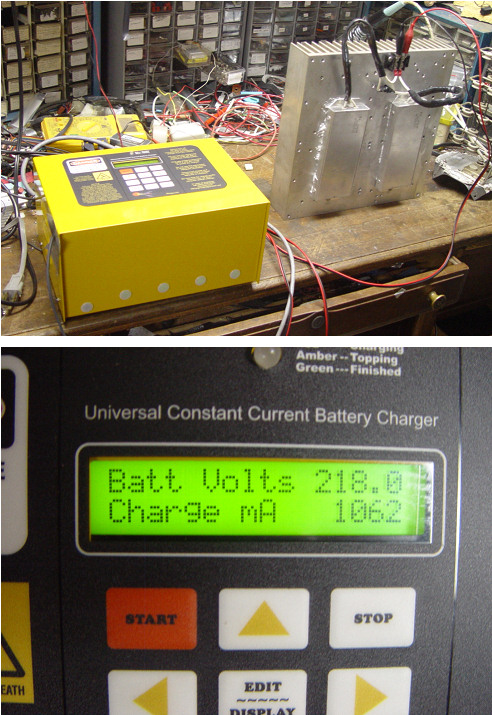Thermal testing.
|
 | |
|
charger testing at full output
|
Set up a big load for testing the chargers. Test one with no fan showed a nasty 140F inside the charger case, so I mounted a 40mm CPU fan rated for 4.9CF/Min on the box and have run a second test.
After 3 hours at full output, we are at a much more reasonable 102F in the box. The big heat sink on the other hand is at 130F, even with a 4" fan blowing on it. 500+ Watts in the closed battery box would definitely cook some cells, or worse yet if one cell had high internal resistance, it would dissipate much of the wattage, and get very hot.
PTC and inlet to outlet temperature monitoring will keep things safe even in worse case conditions.
|
|